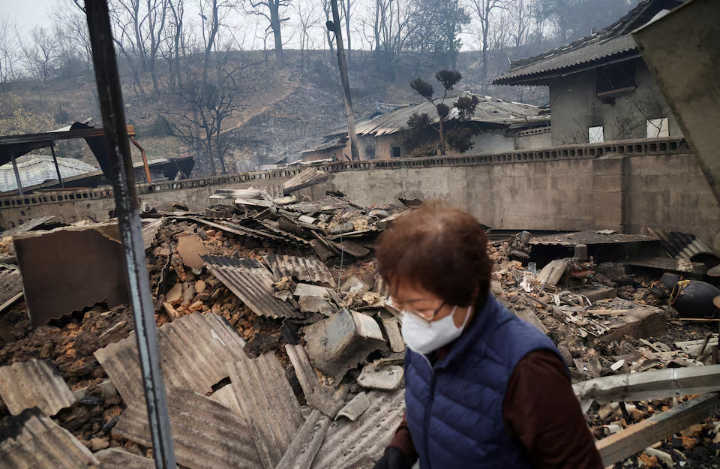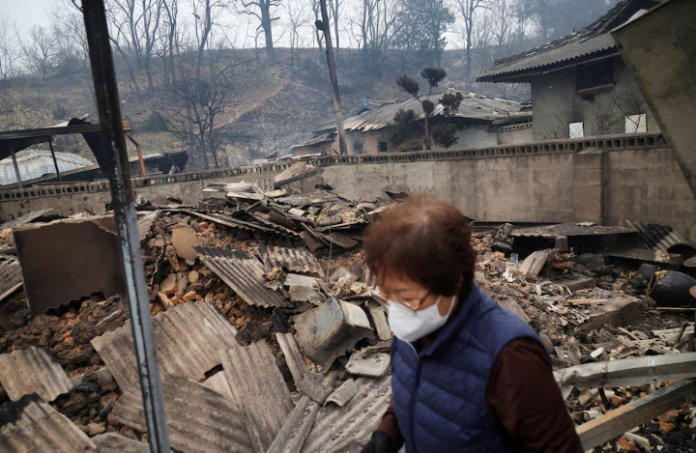South Korea is battling its most devastating wildfire disaster on record, with raging flames destroying historic sites and claiming at least 28 lives. The inferno, which began in Uiseong County, has more than doubled in size within a day, scorching over 38,000 hectares (93,900 acres) of land—making it the largest wildfire in the country’s history.
Wildfires Spread at Alarming Speed
What started as a localized fire has rapidly spread eastward, fueled by strong winds and dry conditions. Within just 12 hours, the flames reached the coastal county of Yeongdeok, about 50 kilometers (30 miles) from the original site. Authorities warn that despite firefighting efforts, the situation remains critical.
“We are nationally in a critical situation with numerous casualties because of the unprecedented rapid spread of forest fires,” said Acting President Han Duck-soo during a government emergency meeting.
Military and Firefighters Battle the Blazes
To combat the disaster, the South Korean military has released aviation fuel to keep firefighting helicopters operational. More than 120 helicopters have been deployed to douse the flames in the mountainous regions of North Gyeongsang province. However, the challenging terrain makes aerial firefighting the only viable option in many areas.
Tragically, one helicopter pilot lost his life on Wednesday after crashing while attempting to contain the fire.
Historic Sites and Homes Reduced to Ashes
The fires have left behind a trail of devastation, destroying entire villages and historic landmarks. Among the most significant losses is Gounsa Temple, a Buddhist site dating back to 681 AD.
“The buildings and remains of what Buddhist monks have left over 1,300 years are now all gone,” said Deungwoon, the temple’s head.
Firefighters are currently working to protect UNESCO World Heritage sites, including Hahoe Village and the Byeongsan Confucian Academy in Andong. These cultural treasures house centuries-old traditional Korean architecture and relics. Officials fear that if the fire jumps a nearby stream, these sites could be lost forever.
Climate Change Worsening Wildfire Risks

Experts point to climate change as a key factor behind the increasing frequency and intensity of wildfires. The Climate Central group, a team of independent scientists and researchers, noted that rising temperatures and prolonged dry conditions are turning landscapes into “dangerous fire fuel.”
This disaster is yet another warning of how global warming is reshaping weather patterns and making extreme events more common.
Hopes for Rainfall to Slow the Fires
On Thursday evening, light rainfall offered some relief, though experts say the small amount—just about one millimeter—is not enough to fully extinguish the fires. Authorities hope that additional rain expected on Friday will help contain the blaze.
For now, South Korea continues to fight against the worst wildfire disaster in its history, hoping to prevent further destruction and loss of life.



